Anthropic announced the Claude 3 model, which is one of the latest large language models and has higher performance than GPT-4. This model has brought to light new advantages in many sectors and tasks. Claude 3 model is an effective AI model for both daily and professional tasks with its advanced writing, coding, prompt following and reasoning capabilities.
In this article, we will examine the Claude 3 model and discover its advantages.
Ready? Let's dive in!
TL; DR
- Claude 3 is the newest and most advanced large language model developed by Anthropic and released on March 4, 2024.
- Claude 3 comes in three different sizes for various tasks; Haiku, Sonnet, and Opus.
- Although Claude 3 is better than the GPT-4 in most benchmarks, it drags behind the GPT-4 Turbo model in some.
- You can access the Claude 3 Sonnet model for free by creating an Anthropic account, but you must pay for Claude 3 Opus.
- Claude 3 offers advantages such as text and code generation, accurate output response, image reading, and large-size context window.
- If you want to combine the Claude 3 model with advanced features, TextCortex is designed for you.
- TextCortex offers features such as ZenoChat and Zeno Assistant to cater to a wide range of users' needs.
Claude 3 Review
Claude 3 is the newest and most advanced member of Anthropic's Large Language Model (LLM) series, which constantly adapts to evolving AI technology and often exceeds its own limits. Claude 3 managed to outperform popular models such as GPT-4 and Gemini Ultra in most benchmarks. The Claude 3 model shines with its high-level performance, especially in reasoning tasks.
Claude 3 Model Sizes
Claude 3 comes in three sizes, each with different combinations of speed, intelligence, and cost designed for various use cases. The Claude 3 Haiku model is specifically designed to quickly complete simple and basic tasks such as knowledge management and is the fastest size of the Claude 3 models. The Claude 3 Sonnet model is a size that specializes in completing mid-level tasks such as code and text generation, with higher performance than GPT-3.5 and Gemini Pro models. The Claude 3 Opus model is Anthropic's most advanced model size, rivalling the most advanced LLMs on the market and outperforming them in most performance benchmarks.
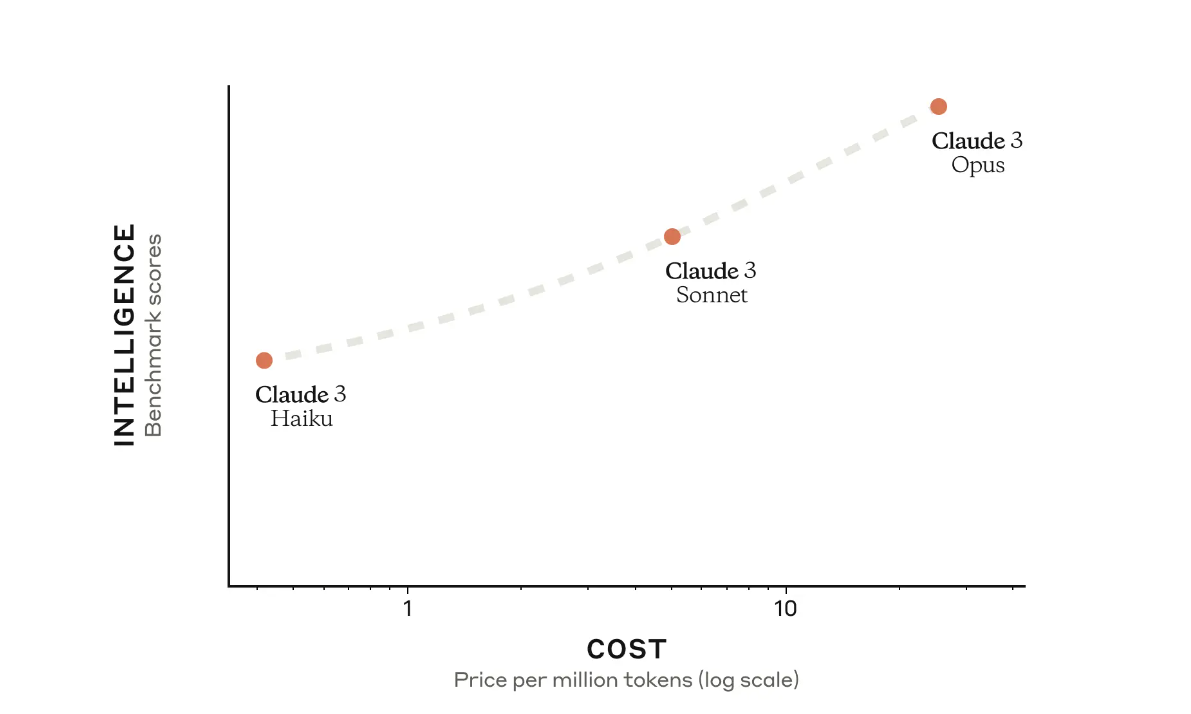
Is Claude 3 Better than ChatGPT?
The Claude 3 Sonnet model is better than ChatGPT's default model, GPT-3.5, in benchmarks such as reasoning, language understanding, and math. When it comes to comparing the Claude 3 Opus model with GPT-4, we can see that the Claude 3 Opus model is better in almost all benchmarks. However, although the Claude 3 Opus model is better than the GPT-4, it lags behind the GPT-4 Turbo model with minor differences other than that reasoning.
Is Claude 3 Free to Use?
You do not need to pay anything to use the Claude 3 Sonnet model. All you need is to create an Anthropic account and head to the claude.ai chat interface. Anthropic is offering the Claude 3 Sonnet model for free to try in 159 countries. However, to experience the Claude 3 Opus model, you need the Claude Pro subscription, which costs $20 per month.
Another way to access Claude 3 models for free is through TextCortex. TextCortex offers all model sizes of Claude 3 to its users by combining them with its advanced capabilities. Additionally, you can experience Claude 3 models for free with the free daily creations that TextCortex offers to its users.

Advantages of Claude 3
The Claude 3 model has unlocked new areas of use and advantages in many industries. Let's take a closer look at the advantages of Claude 3 together.
Text Generation
Thanks to Claude 3 models' grammar, spelling, and sentence structure knowledge in English and non-English languages, you can generate any type of text in languages supported by Anthropic. While the Claude 3 Haiku model is ideal for simple and basic text generation, we recommend that you use the Claude 3 Sonnet or Opus models for your complex writing tasks.
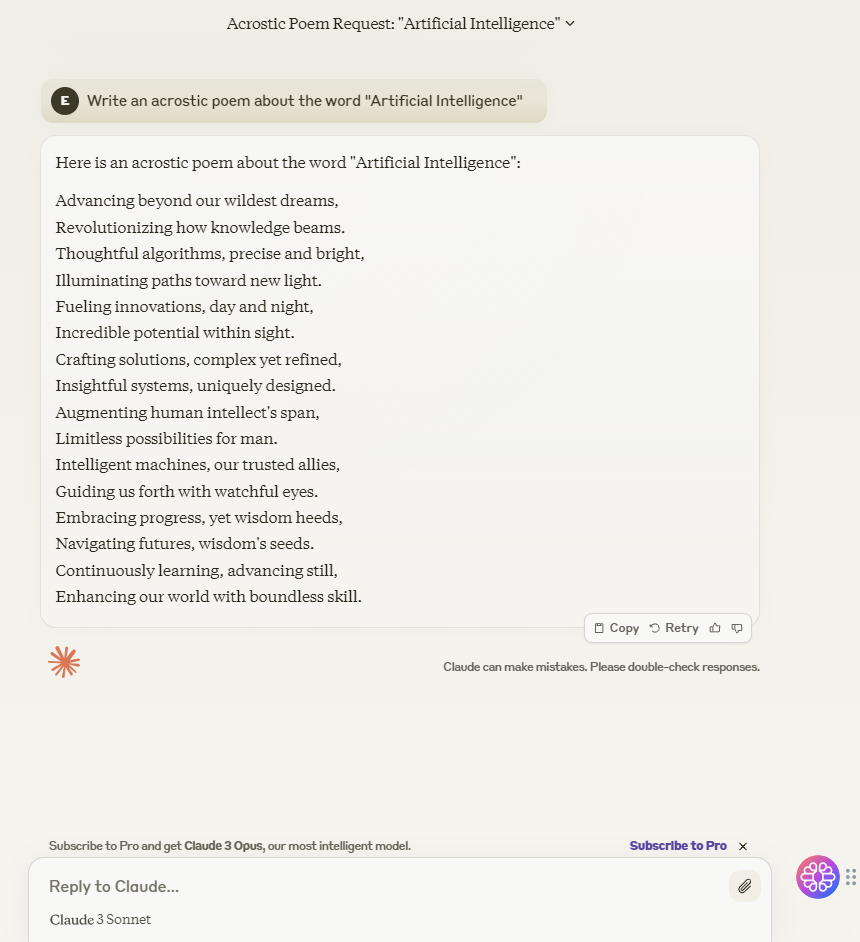
Coding
Since the Claude 3 model is trained using popular coding languages such as Python, C++, C#, JavaScript, and SQL, it can generate output in any of these languages. Although the Claude 3 model does not have a code running feature, it can generate a draft for you in the language of your choice, which can serve as a base for your commands.
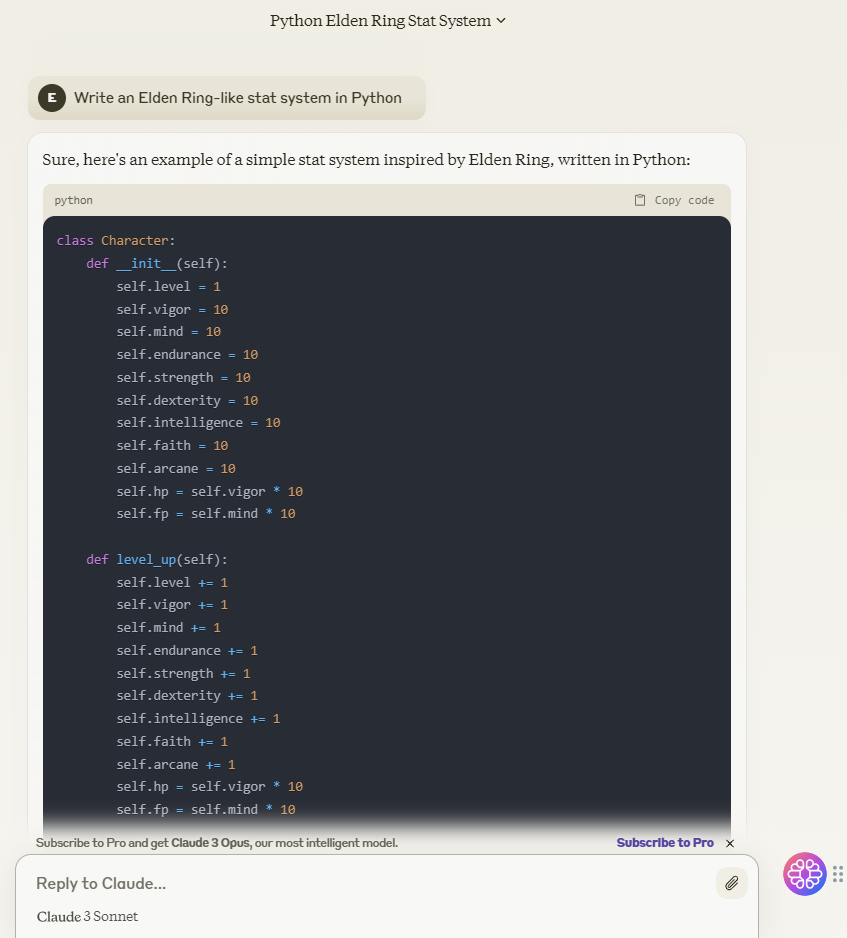
Moreover, the Claude 3 model does not only generate code for you, but it also gives recommendations to improve your code. For example, when you ask Claude 3 to write a stat system like Elden Ring in Python language, it lists the improvements you can add in addition to the basic code.
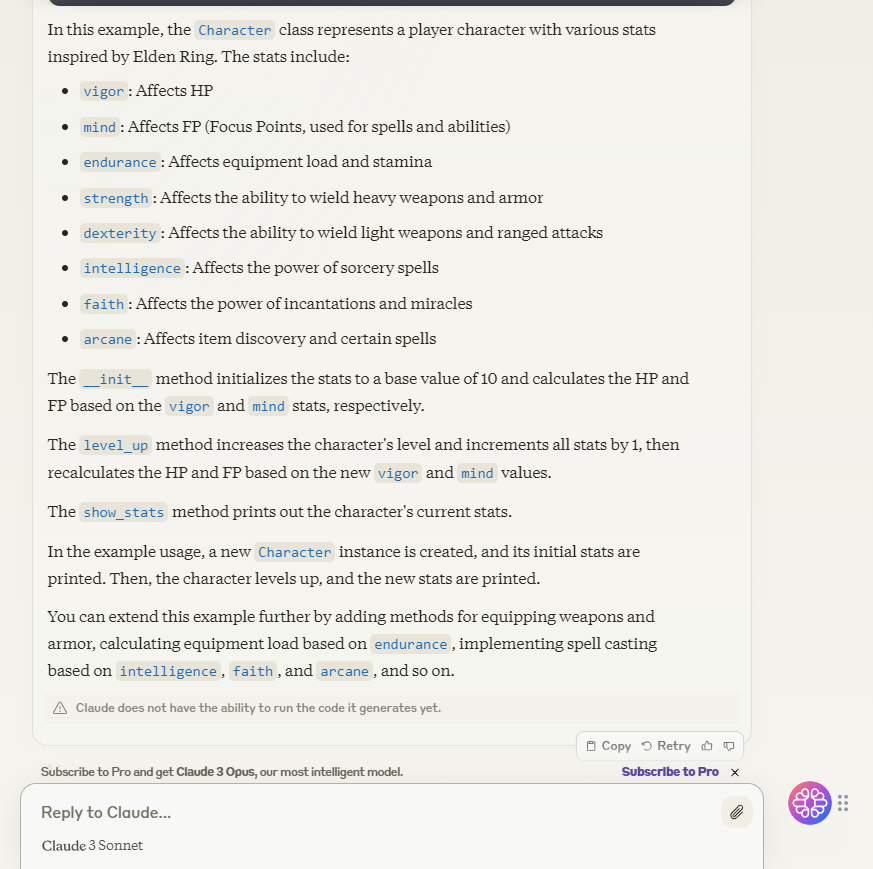
Prompt Understanding
Claude 3 models, especially Claude 3 Opus, are better at following user prompts and understanding their intent than GPT-4 and Gemini. The Claude 3 Opus model can comprehend the prompts provided by the user and deliver the outputs they require with high accuracy. For example, if you request 10 sentences from the Claude 3 Opus model with the last word "game", unlike other LLMs, it can create 10 meaningful and accurate sentences.

Image Reading
Unlike its predecessors, the Claude 3 model supports image input and can respond to accurate information by analysing images. This makes the Claude 3 model an ideal LLM for analysing documents containing graphs, charts, and images. Although the Claude 3 model cannot completely outperform other LLMs in vision capabilities benchmarks, it closes this gap with its larger context window.
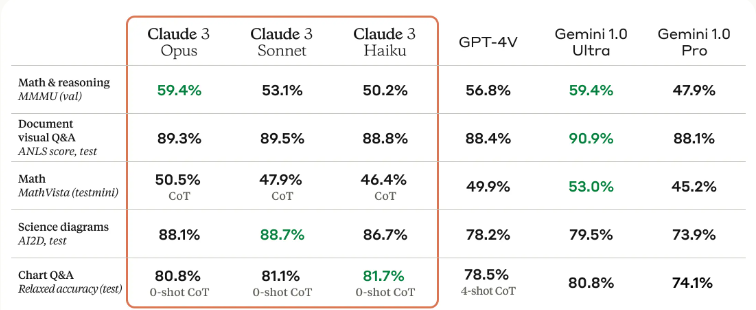
Context Window
Since the Claude 2 model, Anthropic has offered its users a large-size context window, making it an ideal solution for tasks that require working on large amounts of data. The Claude 3 model doubles the context window size of its predecessors, offering users a context window of 200K tokens, which is equal to approximately 150,000 words. Moreover, the Claude 3 Opus model supports input sizes of up to 1 Million tokens for specific use cases. Claude 3 models are efficient and effective in analysing the given data and recalling knowledge.
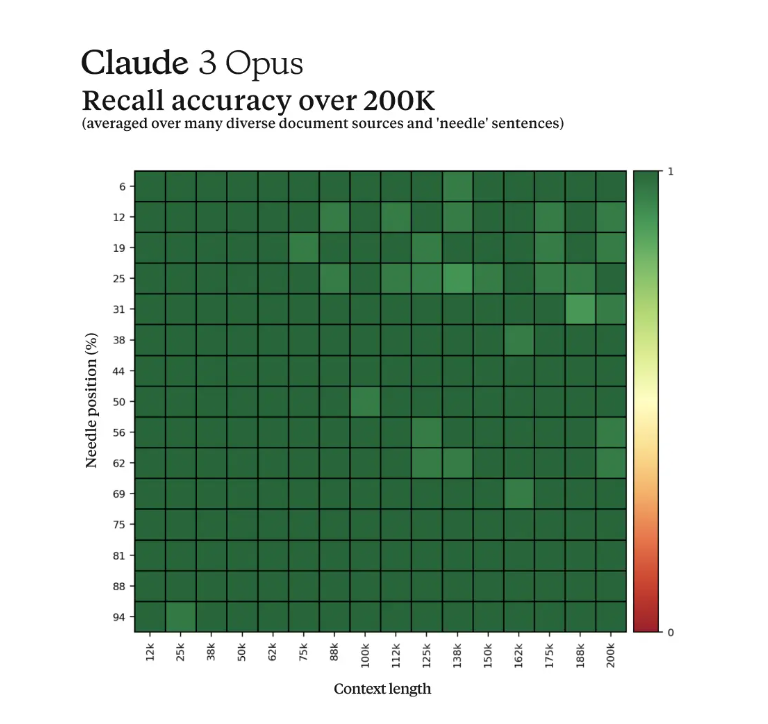
A Better Alternative: TextCortex AI
If you are looking for a customizable AI assistant that has many more features and capabilities than Claude 3 and will support you in your daily or professional tasks, TextCortex is designed for you. With its advanced features and customization options, TextCortex aims to streamline the workload of its users and boost their productivity. TextCortex is available as a web application and browser extension. The TextCortex browser extension is integrated with 30,000+ websites and apps, so it can support you anywhere and anytime.
ZenoChat – An AI like you
TextCortex offers a multifunctional conversational AI called ZenoChat. ZenoChat is designed to help you complete all of your tasks, from research to code or text generation, in a conversational format. Using ZenoChat, you can generate output in popular coding languages such as Python and JavaScript, produce any type of writing, paraphrase your existing content, and complete your research tasks in a human-like conversational format.
ZenoChat comes with a web search feature that allows it to generate output using the entire internet as a data source. ZenoChat's web search feature offers seven options: Internet, Twitter, Reddit, Wikipedia, YouTube, Scholar, and News. By using these options, you can enable ZenoChat to generate output with specific data sources and use it in your specific tasks.
Fully Customizable AI Experience
ZenoChat offers a fully customizable AI experience, thanks to our "Knowledge Bases" and "Individual Personas" features.
Our "Individual Personas" feature allows you to tailor ZenoChat's output style, tone of voice, and personality to specific cases. By using this feature, you can build your own digital twin and use it to complete your tasks.
Our "Knowledge Bases" feature allows you to upload or connect the data sources that ZenoChat will use to generate output. In other words, this feature allows you to train ZenoChat with your own data. Moreover, our "Knowledge Bases" also have a feature that allows you to integrate your Google Drive and Microsoft OneDrive data into ZenoChat.

%20(2).png)
%20(13).png)
%20(12).png)
%20(11).png)